Scheduling Zoom meetings has become a must in today’s hybrid work culture. With a whopping 300 million daily active users, Zoom is now a known name in both business and personal spaces. Did you know that 50% of employees are spending at least one to three hours a week in Zoom meetings? That’s a huge part of the workweek! Zoom’s ability to keep teams connected is what makes it such a powerful tool and why it’s more important than ever to nail the scheduling process.
This blog will guide you through the process of scheduling a Zoom meeting in advance, with a focus on leveraging key features like time zone management, recurring meeting options, and integration with tools like Clockwise.
You'll also discover expert tips on creating effective invites, preventing scheduling conflicts, and troubleshooting common issues to ensure your Zoom meetings run smoothly from start to finish. Let us begin by understanding the core features of Zoom’s scheduling interface.
The Core Features of Zoom’s Scheduling Interface
Zoom offers a highly intuitive scheduling interface designed to cater to the needs of both personal and professional virtual meetings. Let’s break down the most important features you’ll use when scheduling a Zoom meeting:
1. Meeting Type (Recurring, One-Time)
Zoom simplifies meeting setup with options for both one-time and recurring events, ensuring you can easily choose the format that best suits your needs.
- One-Time Meetings: For quick, ad-hoc virtual conversations, Zoom allows you to schedule meetings that occur only once. This is the default setting when scheduling a new meeting, where you can specify the exact date and time.
- Recurring Meetings: You can set the recurrence to daily, weekly, or monthly, along with the frequency of meetings and a start and end date, making it easier to manage recurring schedules without rescheduling them every time.
2. Time Zone Management
Zoom's scheduling interface includes essential time zone management, ensuring everyone joins the meeting at the intended time regardless of their location.
- If you’re hosting a meeting with attendees spread across time zones, Zoom allows you to specify the time zone for your meeting, preventing confusion and ensuring that all participants join at the correct time.
- Integration with tools like Clockwise magnifies this by adjusting your calendar automatically to ensure that time zone differences are accounted for when scheduling Zoom meetings.
3. Video/Audio Settings
Zoom provides customizable video and audio settings, allowing hosts to tailor the meeting environment to match the formality and interaction style of the session.
- Video Settings: When creating a Zoom meeting, you can choose whether the video should be turned on or off for both the host and participants. You can toggle these settings based on whether it’s a casual conversation or a more formal, collaborative meeting. Enabling video at the start can promote engagement.
- Audio Settings: Zoom allows you to specify how participants can join the audio—via computer audio, phone, or both. This is particularly useful for international meetings, where dial-in numbers might be necessary.
4. Meeting Options (Passcodes, Waiting Rooms, etc.)
Zoom enhances meeting security and control with features like passcodes and waiting rooms, offering hosts the ability to manage access and maintain privacy.
- Passcodes: You can secure your Zoom meeting by adding a passcode. This ensures that only invited participants have access to the meeting, adding an extra layer of security.
- Waiting Room: The waiting room feature allows the host to control who enters the meeting and when. This can be particularly useful for large meetings or webinars, allowing hosts to admit participants only once they are ready.
5. Integration with Calendar Platforms (Google/Outlook)
Zoom’s integration with major calendar platforms streamlines scheduling and enhances efficiency by syncing meeting details directly to your calendar.
- Zoom integrates seamlessly with popular calendar platforms like Google Calendar and Outlook. Once you schedule a Zoom meeting, it automatically creates a calendar invite that includes the meeting link, passcode (if applicable), and any other relevant details.
- When connected to your Google or Outlook calendar, Zoom can also sync directly, pulling in your calendar availability so you don’t double-book meetings or over-schedule yourself. Moreover, using Clockwise’s AI-powered scheduling tools, your calendar becomes even more efficient. Clockwise will immediately analyze your calendar to identify ways it can create more time for you to get your work done.
With these features, scheduling a Zoom meeting becomes more than just picking a time. But to make the most of these tools, it’s crucial to implement best practices when scheduling Zoom meetings in advance.
Scheduling A Zoom Meeting: Step-by-Step Process

Scheduling a Zoom meeting in advance ensures a seamless virtual gathering. Here's a concise, step-by-step guide to help you set up your meeting:
1. Access Zoom:
- Open the Zoom desktop application or visit the Zoom website.
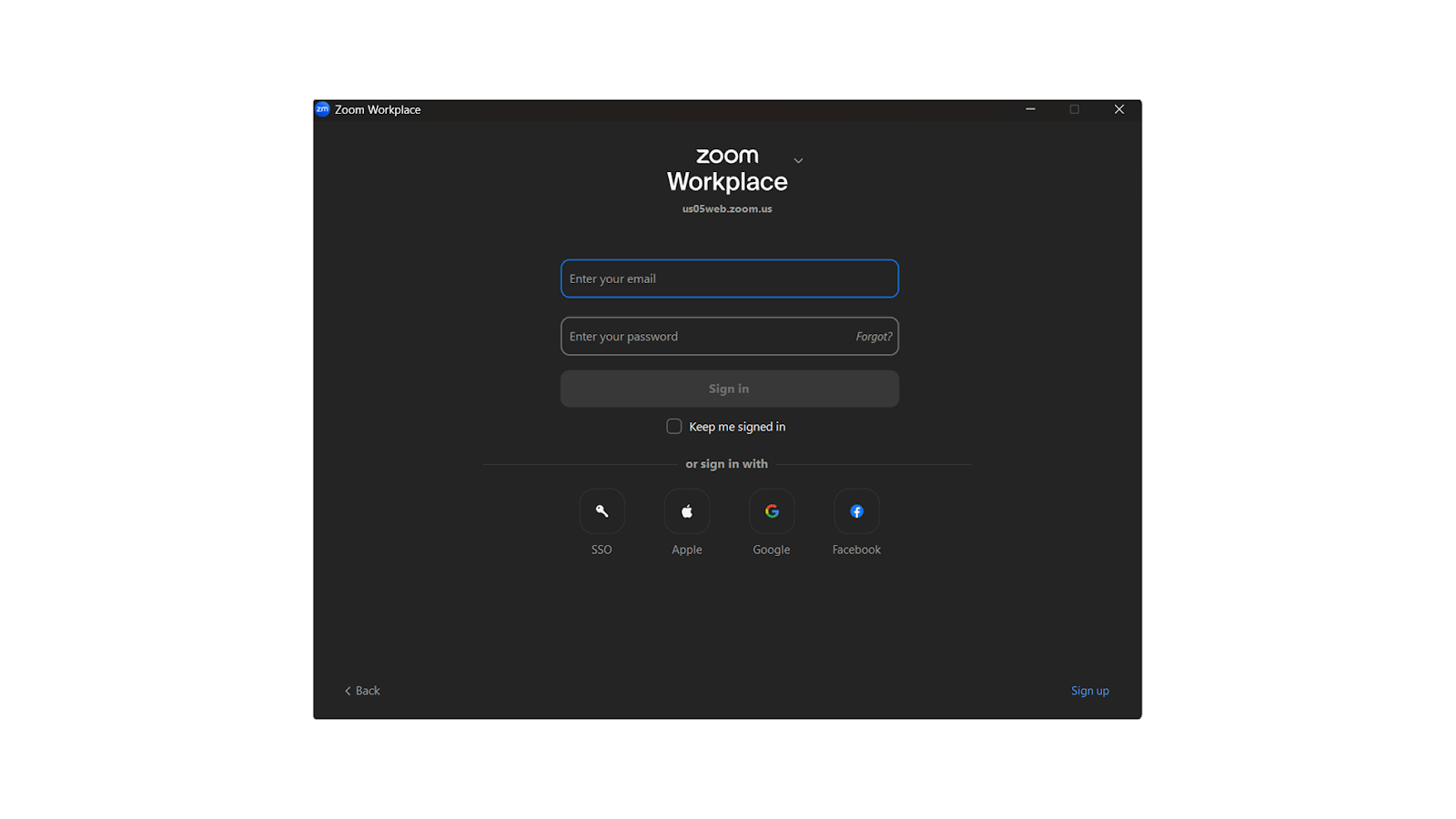
- Sign in to your account.

- Click on the "Schedule" button.
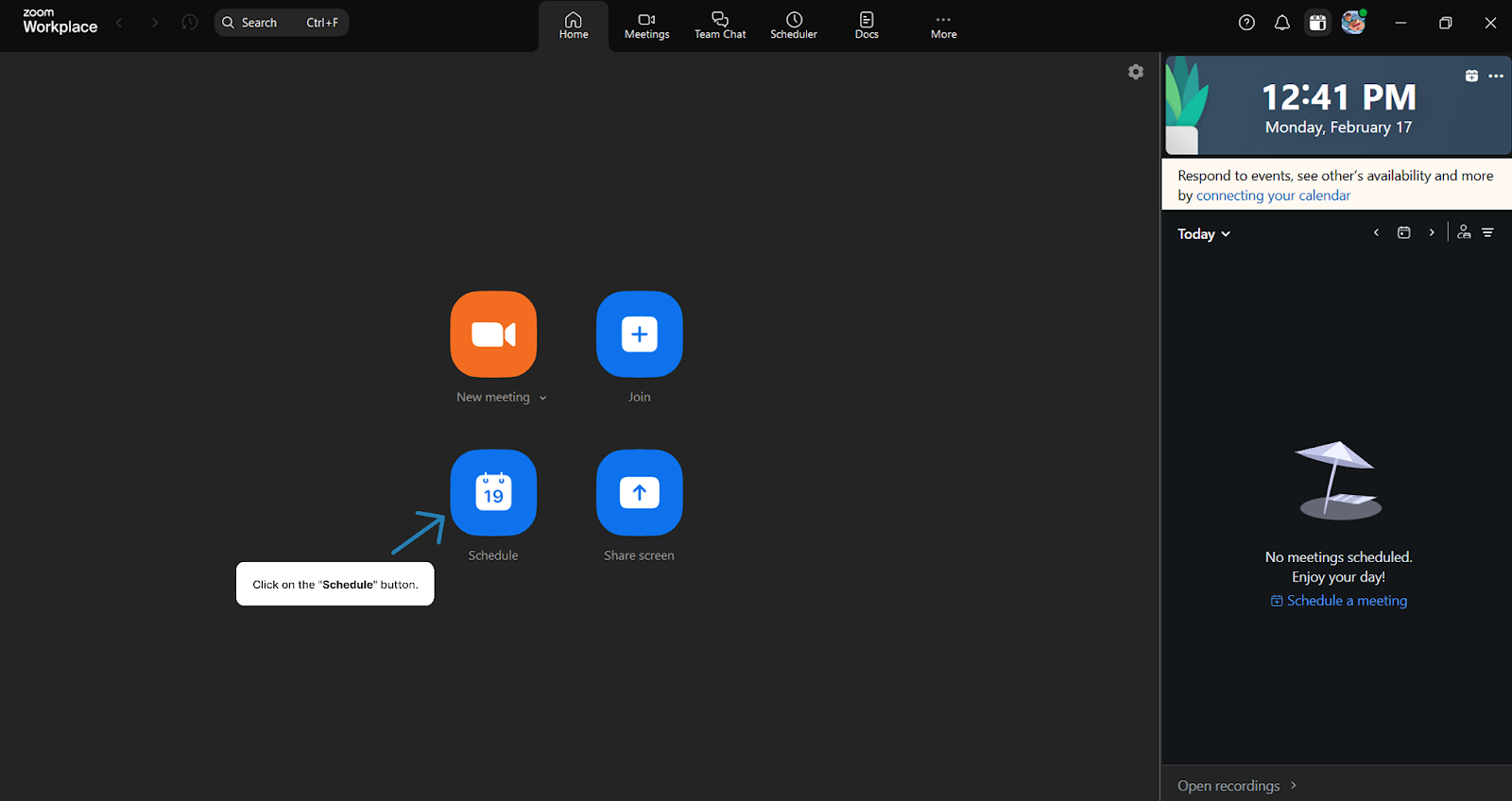
2. Configure Meeting Details:
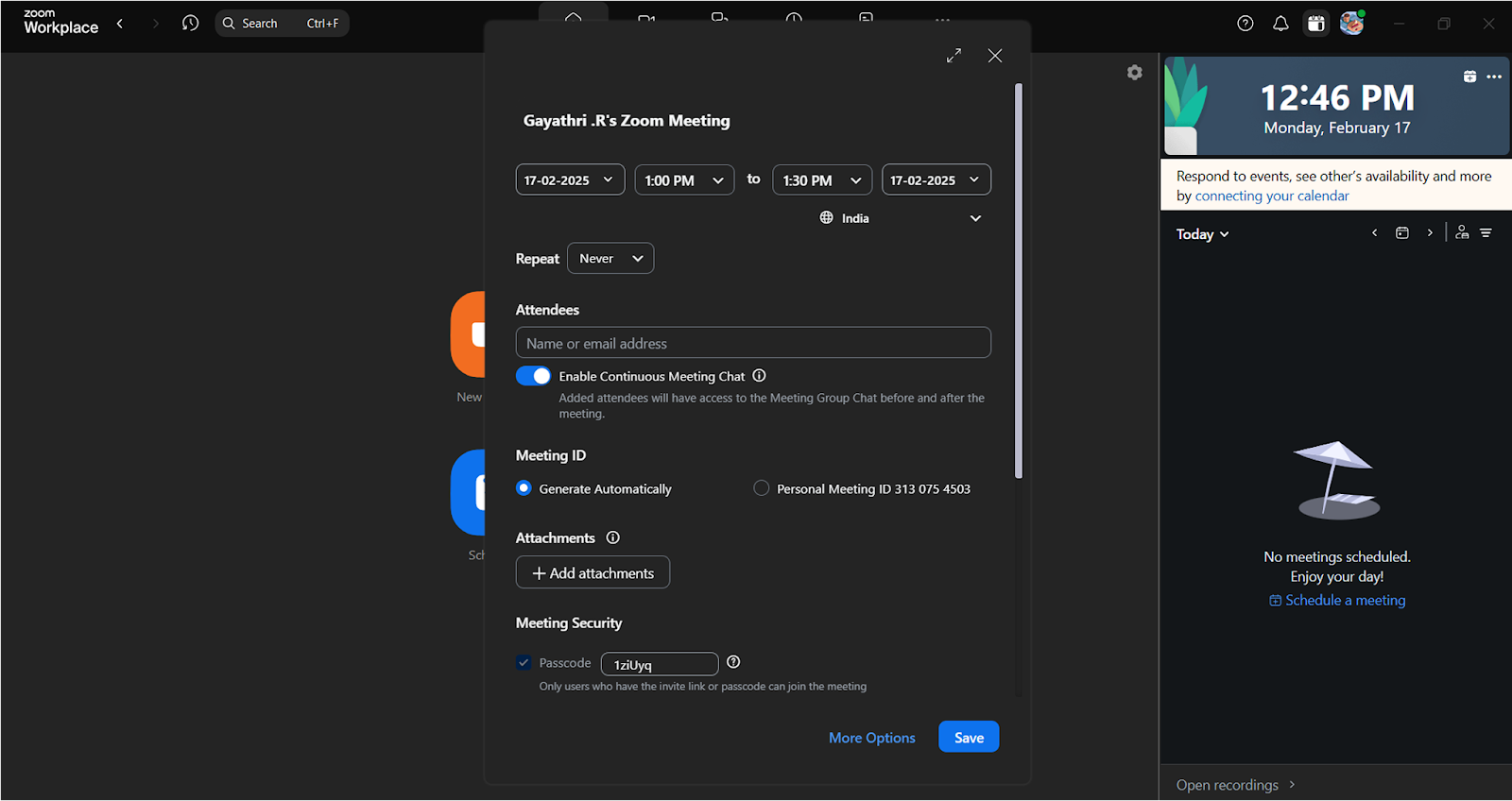
-
- Topic: Enter a descriptive title for your meeting.
- Description (optional): Provide additional context.
- When: Set the date and time for the meeting.
- Duration: Specify the expected length.
- Time Zone: Confirm or adjust the time zone.
- Recurring Meeting (if applicable): Check this box and define the recurrence pattern.
3. Set Meeting Options:
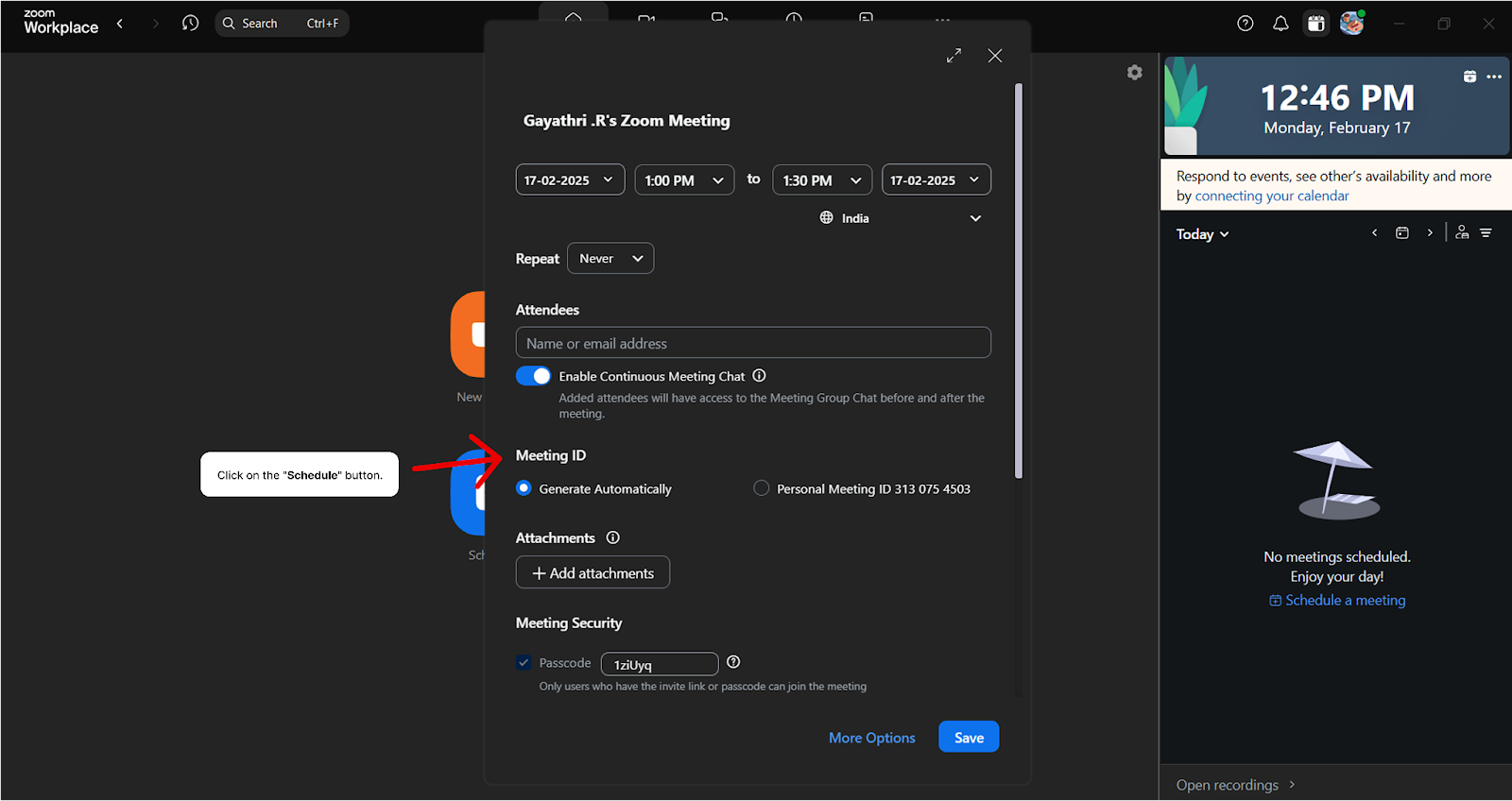
- Meeting ID: Choose to generate automatically or use your Personal Meeting ID.
- Passcode: Decide if a passcode is required for added security.
- Waiting Room: Enable this feature to control participant entry.
- Video: Determine if video is on or off for host and participants.
- Audio: Select whether participants join via computer audio, phone, or both.
4. Integrate with Calendar:

- Choose to add the meeting to your calendar (Google Calendar, Outlook, or Yahoo Calendar).
- This action will generate an invitation with the meeting link and details.
5. Save and Share:
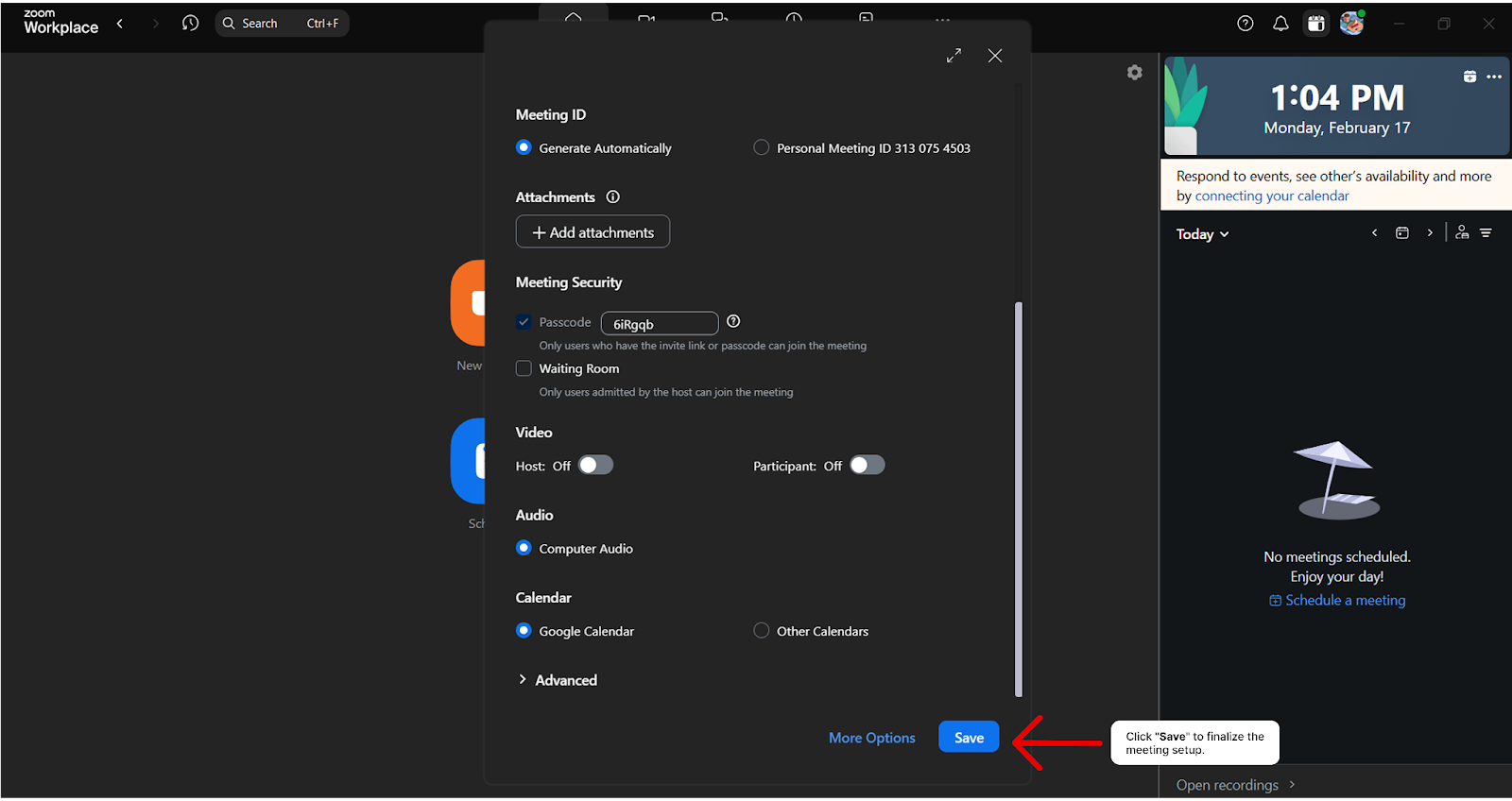
- Click "Save" to finalize the meeting setup.
- Share the meeting invitation with participants via email or other communication channels.
By following these steps, you can efficiently schedule a Zoom meeting in advance, ensuring all participants are well-prepared and the meeting proceeds smoothly. Now let us understand the best practices for scheduling zoom meetings in advance.
Best Practices for Scheduling Zoom Meetings in Advance
Scheduling Zoom meetings in advance is a crucial aspect of ensuring productive and efficient virtual collaboration. By implementing best practices, you can eliminate confusion and set clear expectations for all participants. Here are some key strategies:
1. Clear and Precise Scheduling
Effective Zoom meeting scheduling starts with clarity. Ambiguity in meeting details can lead to confusion, missed agendas, and frustrated participants. Here’s why it’s important to be clear when scheduling:
- Specify the Purpose and Agenda: When you create a Zoom meeting invite, always include the purpose of the meeting and an agenda. This allows participants to come prepared and ensures that the meeting stays focused on its objectives.
- Include Time Zone Information: If you're working across different time zones, it’s crucial to specify the correct time zone in the invitation. This prevents participants from logging in at the wrong time.
2. Choosing the Right Time and Avoiding Conflicts
Selecting the right time for a Zoom meeting involves understanding your participants’ schedules. Clockwise’s Flexible Meetings feature is invaluable in this respect. Here’s how to make the most of it:
- Use Flexible Meeting Scheduling: With Clockwise, you can automate the process of finding the best meeting times based on everyone’s availability. It syncs with your calendar and evaluates your time slots, helping you select a time that minimizes conflict and optimizes productivity.
- Avoid Double-Booking or Over-Scheduling: When planning meetings, make sure you leave enough time for breaks and buffer time between meetings. Overloading your calendar can lead to fatigue and inefficiency.
- Respect Focus Time: Avoid scheduling Zoom meetings during blocks of deep work. By selecting times that respect both your priorities and your participants’ schedules, you maintain balance and productivity.
3. Setting the Meeting Duration
It’s easy to overestimate how much time you need for a meeting, leading to over-scheduling or rushed discussions. To set realistic meeting durations:
- Be Realistic About Time: When scheduling, ensure you’ve allocated enough time to cover all agenda items without rushing.
- Account for Buffer Time Between Meetings: Buffer time is essential for maintaining productivity throughout the day. Always ensure you’ve scheduled breaks and enough time to switch between meetings to avoid burnout.
Having mastered the essentials of scheduling Zoom meetings and optimizing your workflow, let’s understand the tips and tricks of inviting participants in advance.
Inviting Participants in Advance: Expert Tips

One of the key benefits of scheduling Zoom meetings in advance is that it provides all participants with ample time to prepare and plan their schedules. Here’s how you can send effective invites that ensure a smooth meeting process:
1. Include All Relevant Details
When creating a Zoom meeting invite, ensure you provide essential details such as the meeting agenda, any preparatory materials, and instructions for joining the meeting.
2. Be Clear About the Time Zone
Time zones are often a source of confusion, especially when participants are spread across different locations. Zoom offers automatic time zone conversion, but it’s always a good idea to explicitly mention the time zone in your invitation.
3. Set Expectations Early
Providing early invites allows participants to assess the meeting’s relevance to their calendar and ensures that everyone involved knows what’s expected of them.
4. Scheduling Links for Seamless Coordination
Clockwise fits perfectly here with its scheduling links feature which simplify the coordination of meeting times. Clockwise allows you to create personalized scheduling links that align with your availability, eliminating the need for endless back-and-forth emails to find a mutually convenient time.
5. Setting Up Recurring Meetings with Zoom
Recurring meetings are a great way to maintain consistent collaboration without having to manually schedule each meeting. Zoom’s Recurring Meeting option simplifies this process, allowing you to set up a regular meeting that repeats at a specific interval—daily, weekly, or monthly.
When used in conjunction with Clockwise, recurring meetings become even more manageable. Clockwise can automatically adjust your recurring meetings to avoid conflicts with existing appointments and focus time, ensuring that you never have overlapping commitments.
Troubleshooting Common Zoom Scheduling Issues
Scheduling and managing Zoom meetings can sometimes come with its fair share of challenges. From overbooked calendars to technical issues, it’s important to know how to troubleshoot common problems to maintain an efficient and stress-free schedule.
1. Managing Overbooked Calendars
A common issue many professionals face is an overbooked calendar. When meetings pile up, it can become overwhelming to find time for Zoom calls without compromising other critical tasks. Clockwise can help resolve this issue by adjusting your existing meetings, shifting tasks around, or even protecting your focus time, Clockwise ensures that Zoom meetings don't clash with other important appointments.
2. Addressing Technical Issues with Zoom Invites
Technical issues with Zoom invites, such as sync failures or missing links, can disrupt meetings. Ensure your Zoom account is properly integrated with your calendar (Google or Outlook) and check for syncing issues. If problems persist, verify the meeting ID, link, and permissions for participants. You can also send a new invite or use Zoom’s Meeting Dashboard for troubleshooting.
3. Handling Last-Minute Schedule Changes
Last-minute schedule changes can disrupt your Zoom meetings, but Clockwise helps by automatically detecting conflicts and suggesting alternative times. It adjusts meetings without impacting your entire day, keeping your schedule flexible and efficient. This feature ensures you stay in control and maintain productivity despite unexpected changes.
4. AI-Powered Scheduling
AI tools are revolutionizing the process of scheduling. This tool automates the task of finding the optimal time slots for your Zoom meetings, considering your calendar preferences, work habits, and availability. Rather than manually checking your calendar and trying to find suitable meeting times, Prism does the heavy lifting for you.
Utilizing tools like Clockwise with AI capabilities ensures smooth and efficient Zoom scheduling, helping you resolve common issues and maintain productivity with minimal effort.
Conclusion
Effective Zoom scheduling is crucial for maintaining productivity and collaboration in today’s hybrid work environment. By incorporating best practices and utilizing advanced tools, you can eliminate scheduling conflicts, reduce stress, and optimize your time for maximum efficiency.
Clockwise is your ultimate assistant when it comes to scheduling. Its AI-powered tools will help you automatically find the best times for meetings, all while respecting your focus time. With Clockwise, you’ll save time and avoid the headaches of back-and-forth scheduling.
Want to simplify your Zoom meetings? Try Clockwise today for free and take control of your calendar.


.gif)
.png)


%20Large.jpeg)
